

“Excellence in Inspiring Know-how”
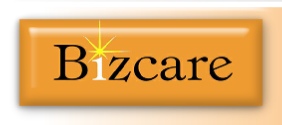
Totally Integrated Business Solutions
Case Studies
Case Study 1 - Business: Pharmaceutical/Medical Supplier - Database Design; SWOT Analysis; Strategic Management; TQM
Case Study 2 - Business: Design, Development and Manufacture (Naval Sector) - ISO9001 Certification; QAR + Internal Audit
Case Study 3 - Business: Manufacturer of Machine Tools and High Precision Parts - ISO9001 + IT Analysis
Case Study 6 - Business: Training Establishment - Business Planning; Sales and Marketing and Advertising Strategies; IT System Design
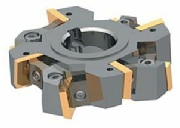
As mentioned earlier Bizcare can develop bespoke management systems or assist in correcting what is already there. We can help solve problems or simply help you separate the wood from the trees on a specific problem, at minimum cost in the quickest of time.
Below are some typical "Business Development" case studies carried out by Bizcare covering various business sectors and solution tools.

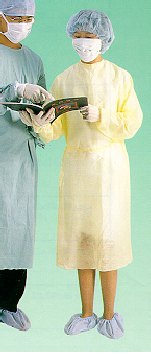 Back to Top
Review Our Sector Experience
Back to Top
Back to Top
Back to Top
Back to Top
Back to Top
Review Our Sector Experience
Back to Top
Back to Top
Back to Top
Back to Top

 Back to Top
Back to Top

Outcome: The company was completely turned around within an eight month time frame. No staff were removed although some had significantly increased responsibilities with their full agreements. Staff moral was reported to be better than ever before with people actually feeling and wanting to be part of the fix themselves. They had been converted into owners rather than doers. Last but not least the General Manager claimed that he could see for the first time ever what was going on, but more importantly what was going to happen before it happened.
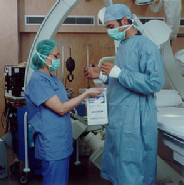
Issues: General Manager (Part Owner) had 30+ people reporting to him on a daily basis but had no visibility or control of daily transactions. Staff always reported late and always after the event. No one could anticipate problems or foresee delivery issues as no one had any authority over the General Manager. A typical scenario with everyone trying their best but no one seeming to be going anywhere!
Bizcare Solution: Although at first it was thought a simple solution involving a clerical fix to incoming correspondence and customer instructions would suffice, after serious discussions at senior level, it was agreed to undertake a thorough business appraisal in order to determine and "see the issues". It was then agreed to do a SWOT analysis on the business and also (from a systems perspective) a review of the existing business systems using ISO9001:2000 as the base line. Although the company did have an ISO9002 system, it had not been properly implemented or maintained, even though it was currently "registered"! Bizcare interviewed all key people, and proposed organisational and system changes to ensure there was proper accountability and responsibility throughout the organisation.
A business plan was developed which covered a new business strategy with meaningful and measurable sales and marketing targets being agreed by, not only senior managers, but also key individuals within the organisation. A full training program was agreed and implemented using Bizcare and Bizcare's Associates where necessary (using key training providers with relevant professional skills when needed). Specific task milestones were clearly identified and managed through to completion with Bizcare taking full project management control. A smart MS Access Correspondence Control application was developed using MS Access Database and all business systems were enhanced along with the existing ISO9002 systems and integrated together with the company's accounting systems.
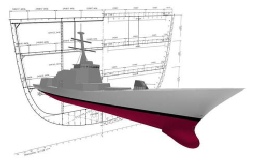
Outcome: Acceptance was agreed between the tender manager and assessment body who confirmed the provisional acceptance following their assessment of the new systems.

Issues:The Client needed to have a fully assessed and registered quality assurance system as part of his tender submission in order to be able to tender for a major MoD contract. Without ISO9001 certification his submission would not have been accepted. The Client currently had a design function but this had never been included in their existing management systems and the MoD deadline for the Tender submission was four months away.
Bizcare Solution: Bizcare contacted the relevant parties involved to determine exactly what had to be in place and where with other external parties this could be achieved within the relevant time frame or not.
With a tentative agreement between the parties concerned Bizcare was given the go ahead to do a gap analysis on the Client’s existing systems after which a comprehensive development and implementation programme was initiated for a new ISO9001 system. This was agreed and a fully implemented system was established within eight weeks during which time objective design evidence was established and this was assessed and the Client’s systems were registered during the same week as the tender bid was submitted.
Outcome: The company’s procedures and staff responsibilities were significantly enhanced to include all the necessary interfaces between the two systems (i.e. the existing ISO9002 and computer software input and output records and reports). The system was also reviewed against the new ISO9001:2000 requirements and additional procedures developed to cover the customer interfaces better. This work was fully completed over a two month period. Senior management were very satisfied in that all the new systems clearly defined the role of each and interfaces between relevant functional departments - prior to this project the systems were not process driven.
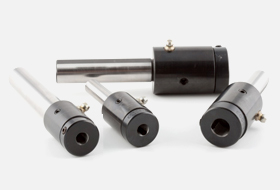
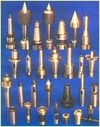
Issues: The Client already had a registered ISO9002 system, however it was obvious that the order processing systems and general quality control procedures were not working in harmony.
Many customers were becoming rather concerned about late deliveries and poor quality in terms of order specifications not being relayed correctly down to shop floor level and subsequent poor final inspection releasing products that were obviously not to specification.
Requirements: Several customers had been at the receiving end more than once and were subsequently forced to go elsewhere. When the sales function undertook an in-depth evaluation to try to determine the root cause of the problems it was very relevant that something was seriously wrong but not easy to pin-point the exact cause or any obvious solutions as the owners of the business were involved and it was not clear who was involved in doing what! After losing a third customer the owners were approached to discuss some corrective measures. After some convincing that things were wrong it was decided to bring in outside help to try to determine the best solutions.
Bizcare Solution: At this point a full evaluation of the existing systems was undertaken to determine how effective the QA systems were in terms of identifying weaknesses and implementing improvements. After a full review of the key QA system procedures and control forms, which revealed plenty of records but many not completed properly and most not closed out, it was decided to undertake a brief assessment on the key processes involved in processing customer orders at the front end. A full audit of these procedures was undertaken to determine the adequacy of the procedures and it was agreed to redevelop certain procedures because of the unclear lines of responsibilities that had emerged over the past couple of years due to the introduction of the new computerised order processing and shop floor loading computer programs that seemed to be at the root cause of the ambiguity in processing certain customer orders. At this stage a full IT system review was also initiated and reports produced accordingly. Essentially the reports were rather damming in that the interfaces between the existing procedures and the new IT systems had not been properly integrated and some redesign was required.

Outcome: A company document file directory structure was agreed with the Managing Director to house all documents centrally. The directory structure was functionally designed so as to assist in setting-up security access workgroup permissions for each member of staff - this is ongoing due to the need to first consolidate all documents from each workstation into the central file structure to establish a clean baseline. New templates were designed and located centrally with all workstations being configured to access these documents directly from their software program (e.g. MS Word, MS Excel templates etc).
Although the above solutions were initiated the company still has some way to go in terms of upgrading machines to the same operating system standards so as to eliminate the problems of backwards compatibility (this is a costly exercise and will take time to achieve). They also need to have a much more formal approach to data access and the Managing Director is currently deciding on who (internally) should be the document custodian who will become that single point of contact for all document revision control. This will result in a much more reliable control of document versions. A decision still needs to be taken on data security and access control and who should control document back-ups and system configuration and maintenance matters in terms of software and operating system updates, system patches from Microsoft and the likes as well a routine defragging, system clean-ups and system virus scans etc.

Issues: The Client was experiencing problems in controlling electronic document versions of their training materials on their server, with very little control of document styles and layouts on documents produced or being modified by different users in terms of their consistency. Also little control was evident on version control which was the company’s main concern as master documents could be modified by any users, at the same time!
Bizcare Solution: A full investigation was undertaken to determine user interactions and preferences when modifying documents, how they controlled the versions being modified during the time the document(s) were in their possession and what tools and templates were being accessed and how these were being controlled both centrally (on the main server) and also locally on the individuals’ workstations. It was soon evident that there were many misgivings, in that users could access the same document at the same time and modify it independently of each other. Also, because the templates were not being chosen with care document corruption in terms of layout etc was inevitable - thus adding much time to producing a finished document printouts.
After further analysis it was determined that the prime cause of some of the problems was:
(1) workstations had different MS Windows operating systems (ranging from Windows 95 on the two oldest to Windows 2000 and XP on recent purchases) as well as different MS Office versions, resulting in backward incompatibility problems for some of the word processors, hence the result that the user would copy the documents to their workstation version inadvertently, not knowing which machine or who had last accessed the document;
(2) there was a lack of data security with most users being able to access most areas on the server and other individual workstations within the same workgroups;
(3) there was little knowledge within the company on the use of styles and templates;
(4) although there was a limited file directory structure operating within the company this was very fragmented and there was no standardisation between the server directories and those created locally for holding documents.
Outcome: The business was completely turned around in approx 12 months with an investment of around US$5M from having little to no control of any business matter to having a fully implemented total quality management system, with new building facilities and key staff in place using up-to-date technology throughout. The business is now investing a huge amount of time and effort into upgrading all its original operational facilities to ultra modern computerized facilities and this is expected to be completed during 2004/5 financial years.
Also, the new business was essentially a new operation in terms of management and quality was not a main driver in terms of ISO9001 certification needs within the local and national markets and the calibre of people employed within.
The final stage (3) covered various activities including the development of a business plan and introductory training sessions with the new management team to the sales and marketing strategies incorporated within the business plan as well as to benchmarking disciplines so they could measure their performance and development with other similar businesses within their immediate markets.
A new management organisation chart was developed (taking the capabilities of existing staff into account) along with a staff training programme for key staff who were introduced to the IT disciplines as the management system procedures were developed. These procedures had all necessary IT interfaces fully integrated within them as well as several IT based work instructions for some of the operational level activities. During this stage much time was spent assessing the capabilities of the workforce (over 110 employees of very mixed nationalities) and after careful consideration it was agreed to initiate a recruitment programme to bring in six new key staff and to reassign existing staff wherever possible.
Almost 95% of the workforce were expats with Saudi Nationals in senior management positions only. A key element of the management systems was to ensure that new procedure documents and necessary control forms were kept down to the bare minimum in terms of bureaucracy (bearing in mind the mixed nationalities involved and the need for all the system elements to be properly integrated together and automated wherever possible, and in Arabic wherever necessary - for Saudisation).
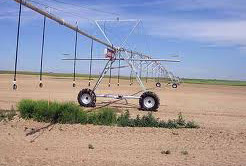
A facilities layout plan also formed part of the project which resulted in a new map identifying all the existing and new building facilities (to house workshops, storage areas etc) and locations for growing areas, RO plant, existing wells, new office buildings and worker camp facilities, Mosque, and showroom etc.
An IT facilities study was also incorporated into the facilities plan covering all the new IT facilities for the farm including Internet connection and local LAN facilities (some 12 workstations with a main server all installed with Microsoft operating systems and standard off the shelf packages for controlling the sales activities as well as the in-house management and financial accounting needs).
Bizcare Solution: The whole farm operations were assessed and a full development programme was initiated in order to turn it into a successful commercial operation.
The solution comprised three parts:
(1) to establish the legal aspects of the business and organise these through to completion;
(2) the development and implementation of the new management systems; and
(3) the development of sales and marketing strategies to enable the proper development of the commercial trading aspects of the business to be committed to and established as early as possible so that the new business could continue to operate commercially whilst staff recruitment and retraining programmes were initiated.
Stages:
(1) the legal aspects of the business were established in conjunction with the family’s existing lawyers who agreed to establish the business on a commercial basis so that management could be given the full control of all trading matters - this took around 10 to 12 weeks. The second stage
(2) involved a gap analysis using ISO9001:2000 to determine the current standing of the management disciplines followed within the business. As well as ISO9001:2000 requirements the EFQM (European Foundation for Quality Management) Excellence Model was introduced as a means of identifying the additional aspects of the business that need to be addressed at the early stages of developing the management systems so that all the farm operational aspects would be properly documented and controlled at the outset (e.g. financial management and sales and marketing, showroom and worker camp management, farm security etc).
Issues: The Client (an old established Saudi Arabian farm with substantial acreage and building facilities) had been around for many years but had never been properly managed with respect to monetary or management control matters. It had always operated on a cash required basis (on a just in time fire fighting need) with very little planning or management and was essentially causing the owners much concern.The business (being a farm with special exemption for farms from the Saudi Government) was not properly established from a legal sense and in order to formulate the business into a profitable commercial enterprise (that could both market it’s products nationally and be able to advertise its wares and establish a supplier base from overseas - from a customs import duty position) the legal aspects had to be properly established at the outset.
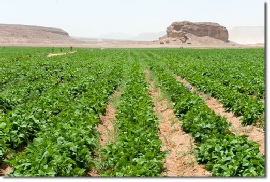


Outcome: A new business plan was developed and actions and target milestones within were agreed and an action plan developed for each key staff person. The actions identified within the new marketing strategy section were also initiated by the senior manager which included contacting various database search engines and associations to determine the best advertising campaign and to also evaluate the existing web site for optimising it’s search tags and keywords etc. to maximise the possibility of hits from the main search engines as well as other linked search engines from within.
Several advertising payment options are currently being reviewed in order to determine the next year advertising (via Internet) budget. A new IT upgrade plan was also developed and implemented which covered the upgrading of three workstations as well as the design of a new directory structure for the main server. A new IT facility maintenance procedure was developed and key staff trained in it’s use. All staff were then assigned workgroup security assess codes as necessary and a weekly maintenance regime was started. The company is now to look at further funding for its web site development from Business Link.
Issues: The Client required a business plan to help it develop into the training sector and link into other training providers and likely delegate search areas. It also required an IT review and support to upgrade its IT facilities and decide on best strategy for advertising the business facilities and training courses within the industrial and other related sectors via the Internet.
Bizcare Solution: A full appraisal of the business was undertaken to determine the exact scope of its operations and also potential areas that could be developed to open up new opportunities for it to grow within the local and national market.
Much time was spent with the senior manager reviewing their marketing strategies. Financial performance data was derived from previous years trading results and agreed action plans were initiated towards achieving the new forecast sales targets and milestone dates. A full appraisal was also undertaken on their IT facilities and an action plan agreed to upgrade some of the 4 computers so that they could make best use of their LAN facilities. Essentially there was little security in terms of who could access what and very little commitment had been shown in the past to ensuring that the systems were properly maintained and that proper back-up regimes were in place to safe guard the company’s data files. Anti virus tools and firewalls were also being used but not on all machines.